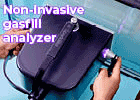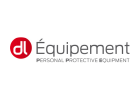Heatan™ reduces manufacturing steps, components and space required for sensors
An innovative technology for glass-ceramic insulators can fundamentally change the production of exhaust gas sensors. Heatan are components manufactured entirely by SCHOTT.
They combine a material developed specifically for this purpose with a matching production method. The result is a significant reduction in the number of parts in a typical sensor as well as the space required. What’s more, only two production steps are needed instead of 20.
Heatan combines the advantages of glass as an insulation material with those of ceramics which have been used so far in exhaust gas sensors. Glass is well suited as an insulator in many applications because it can be sealed directly with metal. However, it does not withstand the high temperatures in the exhaust gas system. Glass-ceramics, on the other hand, resist temperatures of up to 1000 degrees and – unlike pure ceramics – also enable a gas-tight connection to the metal body of a sensor.
More space in the exhaust tract
From the outside, the difference between Heatan and ceramic insulation is considerable. “All in all, axial space required for sensors is reduced by more than 50 percent,” says Mark Stronczek, Sales Manager Automotive at SCHOTT.
Small sensors offer a major advantage for vehicle manufacturers. Increasingly stringent emission control regulations, for example in connection with the Euro 7 standard, usually require them to have additional or different sensors. This means that components need more space in the engine compartment and along the exhaust tract.
No additional fixing required
Supplied entirely by SCHOTT, Heatan components are smaller per se than their ceramic counterparts can ever be. What’s more, glass-ceramic technology does not require metal springs or rings to secure the insulator in the sensor housing. Instead, the new insulators are hermetically sealed with the other parts. Conventional ceramics require significantly more space for sealing. The improved sealing is particularly evident in gas sensors, where SCHOTT sees major potential for the new product. In addition to temperature resistance, they naturally meet all other automotive requirements such as those relating to chemicals, consumables and environmental influences.
Drastically reduced steps
The technical benefits for OEMs and suppliers go hand in hand with cost benefits. They are the result of dramatically simplifying the production of the sensors. “The number of steps is reduced from about 20 to two,” says Stronczek. There is also a significant decrease in the number of parts required. Only the connection cable and a protective cap are added to the SCHOTT component. By comparison, conventional designs require up to a dozen components. And their purchasing, logistics and warehousing generate costs of course.
The base material for insulators made of Heatan requires a precisely controlled thermal process. The company supplies the parts as subcomponents to sensor manufacturers, or – depending on the supply chain – back to them.
SCHOTT is a leading international technology group in the areas of specialty glass, glass-ceramics and related high-tech materials. With over 130 years of experience, the company is an innovative partner to many industries, including the home appliance, pharma, electronics, optics, life sciences, automotive and aviation industries. SCHOTT has a global presence with production sites and sales offices in 34 countries. In the 2018/2019 fiscal year, the group generated sales of EUR 2.2 billion with over 16,200 employees. SCHOTT AG has its headquarters in Mainz (Germany) and is solely owned by the Carl Zeiss Foundation. This is one of the oldest private and largest science-promoting foundations in Germany. As a foundation company, SCHOTT assumes special responsibility for its employees, society and the environment.


























